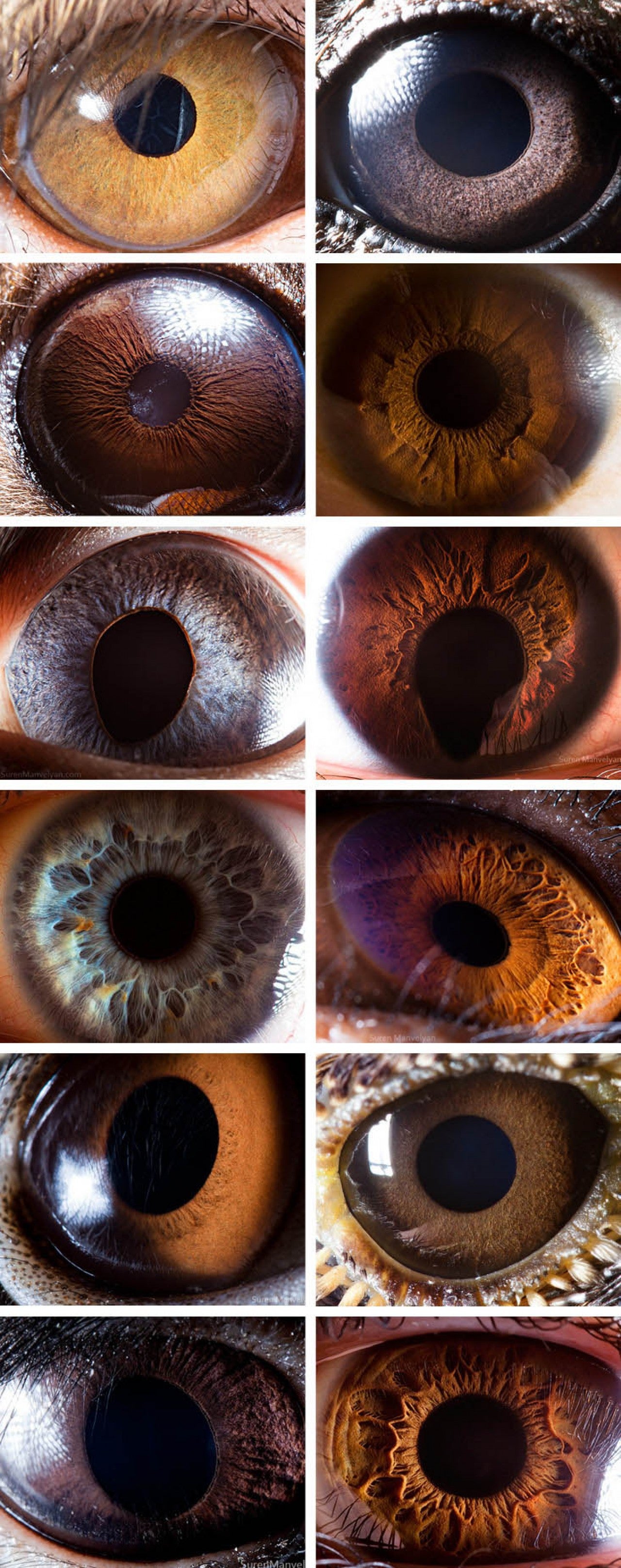People place incredible importance on their eyes. They’re arguably our default tool for perceiving the world, and one of the
primary ways we remember and describe one another. Your eye color is on your
birth certificate, driver’s license, and online dating profile. Those who make
eye contact are considered more competent, friendlier, and more professional.
Online commenters forced to make eye contact with others while writing leave nicer comments. Audiences favor musicians who look at the crowd, and children
who don’t make eye contact are flagged as troubled.
Eye contact is so important to humans that when we
look at our animals we often find the same kind of connection. “Staring into
the eyes of a chimpanzee, I saw a thinking, reasoning personality looking
back,” Jane Goodall says, in her book Reason
for Hope. In the jungles of Rwanda, Dian Fossey watched the eyes of the
gorillas she was watching. “Their bright eyes darted nervously from under heavy
brows as though trying to identify us as familiar friends or possible foes,”
she wrote.
In Nautilus’ first issue, the primatologist Frans de Waal says that eye contact can turn an ape-curious person into a professional primatologist. “For the
primatologist, most of us were completely fascinated the first time we looked
into the eyes of an ape. We felt an immediate connection between apes and
humans. We feel this connection at a very visceral level.”
But what are these powerful little marbles in our
heads, and why do they look the way they do? Are human eyes so different from
those of chimps or birds or lizards? Photographer Suren Manvelyan has a huge collection of detailed photographs of both humans and
animal eyes. Some of them look very alien to us; others are quite human-like.
Without the fur, feathers, or scales to give them away, would you be able to
tell which eyes are whose? Look at the images below and try to identify which
belong to non-human animals and what kind of animals they are. The answers are
at the bottom of the post, but don’t peek before you guess. Hint: There are
four human eyes.

The textured, detailed surfaces you’re seeing in these eyes are made of two sets of fibers—radial and sphincter. The sphincter fibers
close the pupil to let in less light while the radial fibers pull the pupil
open to let in more. This isn’t what all sphincters in your body look like—most
muscles are sheathed in a membrane to cover them up. So the sphincters that
control your digestive tract, for example, aren’t nearly this pretty. In the
eye, however, there is no protective sheath, and the muscles are open to the
aqueous humor, the fluid that fills the eye. The folds in the iris (the colored
part) are caused by the pupil’s dilation:
as the radial fibers pull the iris back, the tissue bunches up.
Every person (and chimpanzee and dog) has an iris is
that is unique—so different that they’re excellent biologic identifiers. And
because the eye is constantly moving, irises are hard to fake. Many companies
that use iris-analysis systems are well-versed in rooting out imposters.
The eye has long fascinated humans, and for a long
time we were unable explain just how something so complex could form, giving
rise to the idea that it must have been intentionally created. But despite the
transcendent feeling it might give primatologists, the eye doesn’t require the
existence of an intelligent designer. As David Attenborough explains here, it’s simply another incredible example of
evolution.
Answer key:
Rhesus macaque | Duck
Flying possum | Human
Siamese cat | Human
Human | Chimpanzee
White-nosed macaque | Lark
Black rabbit | Human






























